The Arctic might seem like the last place on Earth you’d search for something edible — a land of ice, wind, and white emptiness rather than a home for fruit-bearing plants. Yet, if you look closely at the tundra during its brief summer, you’ll find a surprising treasure trove of edible berries tucked low to the ground. These are tough, nutrient-dense fruits that have evolved to survive brutal winters, shallow soils, and only a few weeks of warmth and sunlight.
Unlike southern forests and orchards, the Arctic produces no plums, mangoes, or grapes. Instead, its bounty comes in the form of rugged berry plants — from golden cloudberries to glossy crowberries — that are rich in sugar, vitamins, and energy. For generations, Indigenous peoples like the Inuit have relied on these fruits not just for food, but as vital sources of nutrients when nothing else would grow.
If you’re interested in foraging in the far North, the wisdom of experienced locals is invaluable. With their guidance — and careful plant identification — you’ll discover that the Arctic isn’t barren at all, but bursting with hidden flavors. Here’s a look at 17 incredible wild arctic fruits that thrive where almost nothing else can.
1. Crowberry
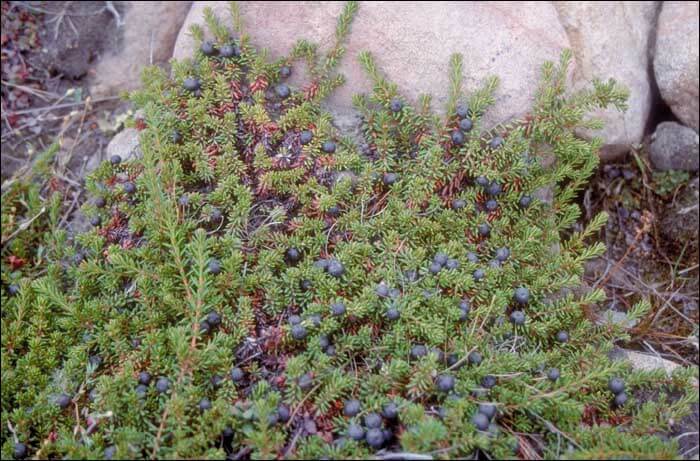
A true survivor of the tundra, the crowberry (Empetrum nigrum) forms dense mats across windswept ground and rocky slopes. The berries are glossy black and mildly flavored — not especially sweet, but pleasantly juicy when eaten fresh. Traditionally, crowberries were mixed with sweeter fruits like blueberries or added to fish and meat dishes for moisture and vitamin C. While not a “dessert berry,” they’re prized in survival for their sheer abundance, late-season availability, and ability to stay firm even under early frosts.
2. Arctic Cloudberry

Often called “Arctic gold,” the cloudberry (Rubus chamaemorus) is among the most sought-after wild fruits in the far north. Growing singly on low plants, its amber-colored berries taste like a cross between raspberries and apricots. Cloudberries are incredibly rich in vitamin C and antioxidants — and prized not just for their flavor but for their rarity. A handful of ripe cloudberries can feel like a treasure found in otherwise harsh terrain. If you ever chance upon them, gather gently — and leave a few for the bears who love them just as much.
3. Arctic Raspberry (Nagoonberry)
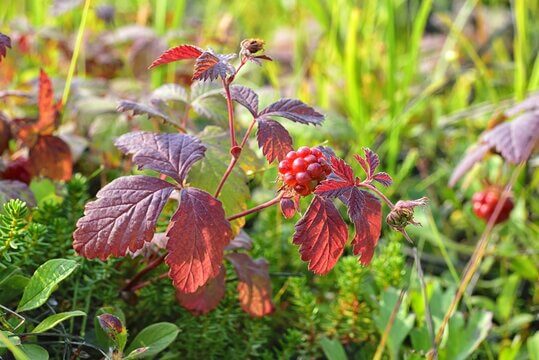
The Arctic raspberry (Rubus arcticus), locally called nagoonberry, is a tiny gem of the northern forests and meadows. Though small, these bright red berries pack an intense sweet and floral flavor — many describe it as the “wild strawberry of the Arctic.” They grow near the ground and ripen in midsummer. Foragers treasure nagoonberries not just for survival use but for special treats like jams, liqueurs, and preserves. Their scarcity means every berry is worth the hunt.
4. Bilberry
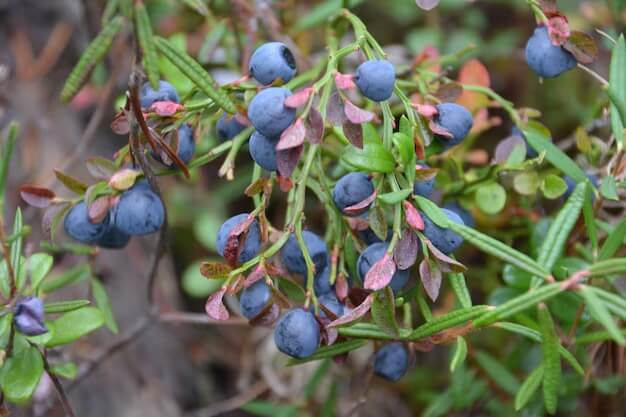
Bilberries (Vaccinium myrtillus) resemble small wild blueberries but with darker flesh and richer flavor. Found in sub-Arctic woodlands and heath areas, they grow on knee-high shrubs and ripen to a deep blue-purple. Packed with antioxidants and natural sugars, they’re one of the tastiest and most user-friendly Arctic fruits. Eat them raw as trail snacks, bake them into bannock, or dry them for later — your body will thank you for the vitamin boost.
5. Lingonberry / Cowberry
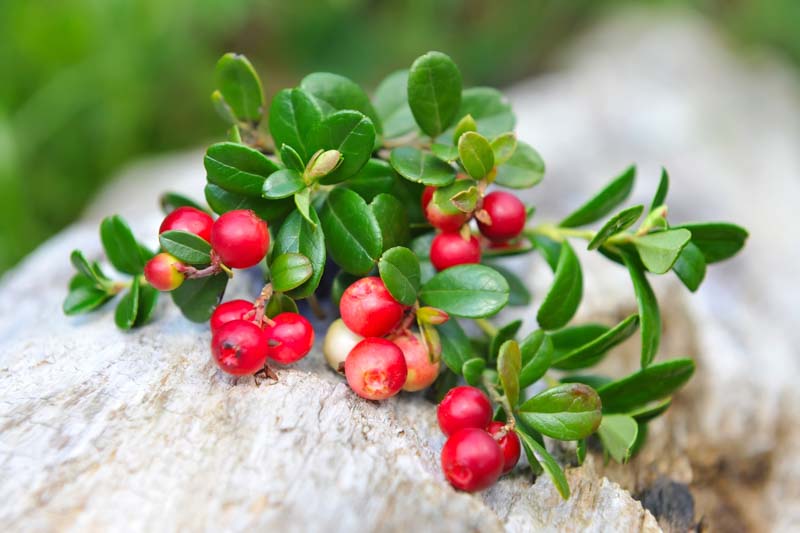
A northern staple, the lingonberry (Vaccinium vitis-idaea) is a tart red berry that grows on glossy-leaved shrubs carpeting the forest floor. Too sour to eat by the handful, lingonberries shine when cooked or sweetened, making long-lasting jams, syrups, or sauces — perfect for storing through the dark winter. High in vitamin C and benzoic acid (a natural preservative), these berries were historically mixed with meat or fish to keep them from spoiling. Think of them as the Arctic’s natural refrigerator.
6. Bearberry
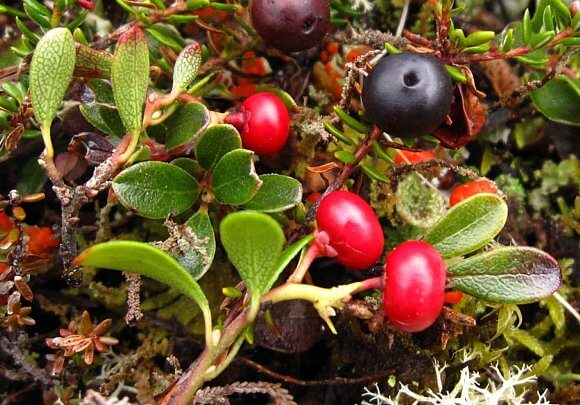
Don’t be fooled by the tough, leathery leaves — bearberry (Arctostaphylos uva-ursi) produces small red berries that are edible, though mealy and bland when raw. They are more valued for their ability to stay on the plant throughout winter, providing emergency calories when nothing else is available. Bears love them (hence the name), and humans historically dried or cooked them into pemmican-style mixtures with fat and meat. In a survival situation, bearberries are far from gourmet but can be a steady, long-lasting food source.
7. Arctic Cranberry
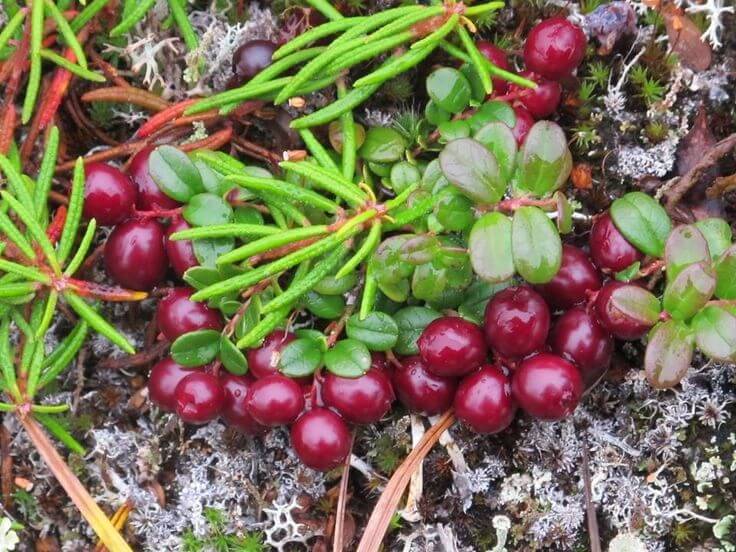
A close cousin of the commercial cranberry, the Arctic cranberry (Vaccinium oxycoccos) creeps low over sphagnum bogs, bearing tart, ruby-red berries in late summer. These berries are intensely sour but highly nutritious — perfect for scurvy prevention and medicinal teas. Indigenous peoples often mixed them with animal fats or honey to improve flavor. Arctic cranberries also freeze naturally on the plant and can be harvested well into winter, making them a dependable cold-season food.
8. Bog Bilberry
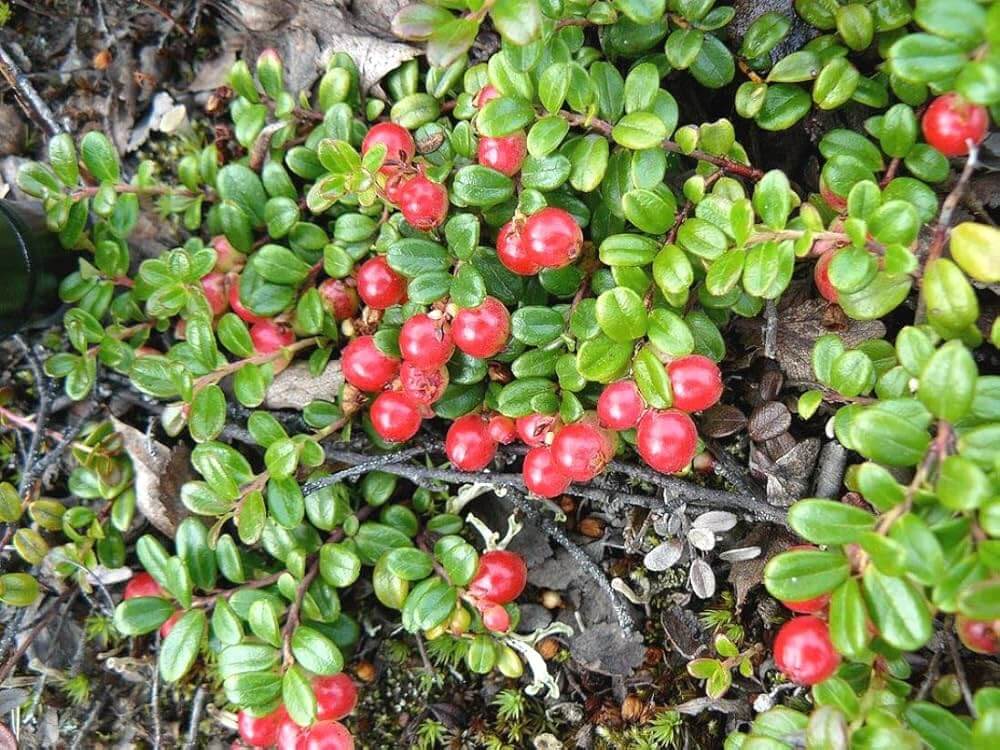
Growing in wet tundra, peat bogs, and swampy edges, the bog bilberry (Vaccinium uliginosum) produces dusty-blue berries that look like blueberries with a powdery bloom. They’re milder and slightly sweeter than bilberries, with juicy flesh that bursts easily. Foragers love them for their availability in northern boglands and their sweet taste when eaten fresh. Because they spoil quickly, they are best eaten on the spot or dried in the sun for future use.
9. Dwarf Cornel Berries
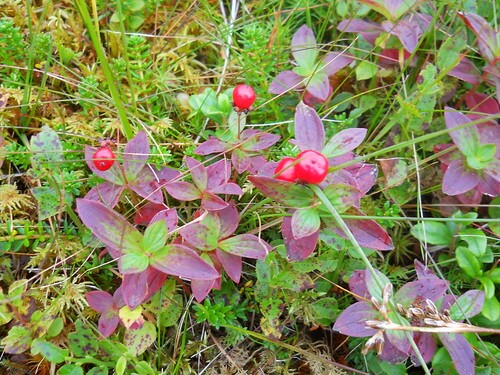
Grown on a creeping dogwood plant (Cornus suecica), dwarf cornel berries are bright red and eye-catching against the mossy tundra floor. While not very sweet — in fact, somewhat bland and mealy — they are edible and were traditionally eaten mixed with sweeter berries such as blueberries or cloudberries. Their main value lies in their availability in late season and their use as filler in preserves and stews. In a survival scenario, they can add bulk and nutrition where tastier fruits are scarce.
10. Soapberry
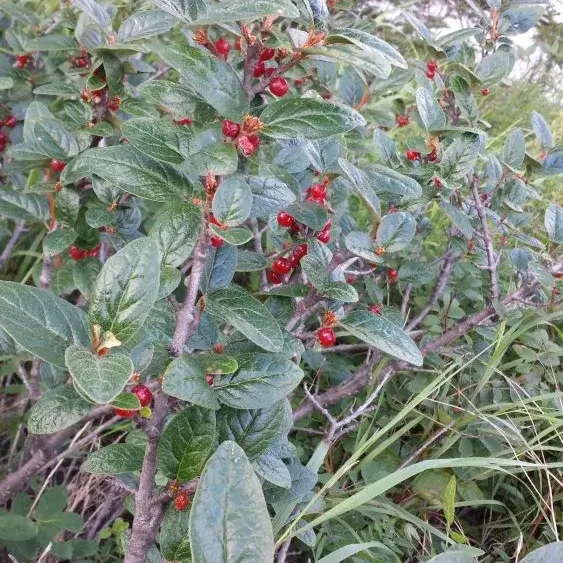
Soapberries (Shepherdia canadensis), also known as buffaloberries, are tart, reddish-orange fruits that grow on hardy shrubs across sub-Arctic forests. They pack a sharp, prickly flavor due to natural saponins (which can foam like soap when whipped). Indigenous peoples famously made “Indian ice cream” by whipping the berries with sugar or sweet roots into a frothy dessert. Soapberries are rich in vitamin C but too bitter to eat plain — best enjoyed when mixed with sweeter ingredients or dried to reduce their sharpness.
11. Mountain Sorrel
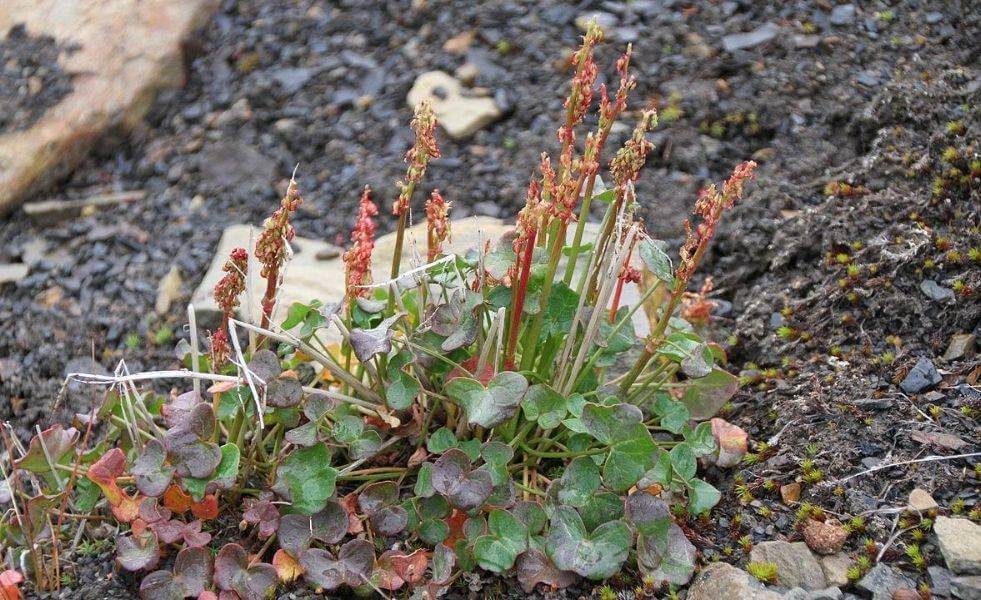
Mountain sorrel (Oxyria digyna) is a leafy plant of alpine and Arctic zones whose small round leaves taste lemony and refreshing. It also produces tiny reddish seed pods (technically its fruits) that are edible. Though not fruity in the traditional sense, the pods and leaves are high in vitamin C and were eaten raw by explorers to prevent scurvy. Mountain sorrel adds a bright, tart flavor to trail salads and is one of the most useful “greens” in Arctic foraging.
12. Labrador Tea Berries
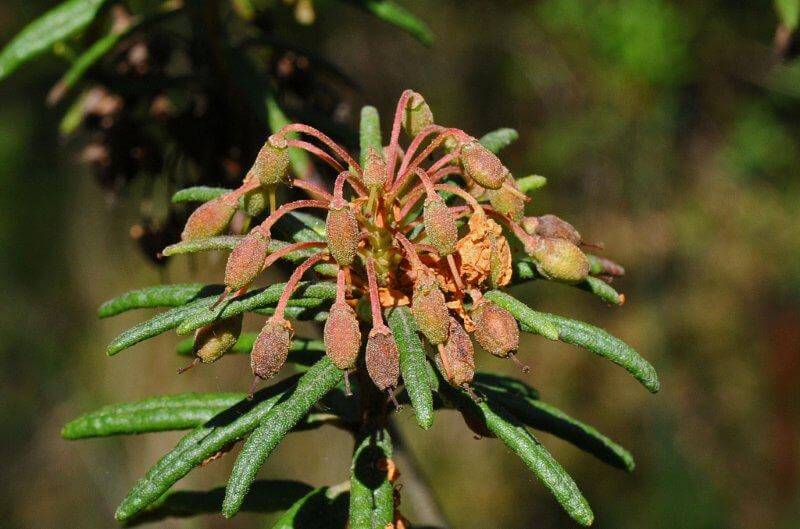
While most foragers know Labrador tea (Rhododendron groenlandicum) for its fragrant leaves used in hot brews, the shrub also produces small dry capsules containing seeds, sometimes referred to as berries. These are not typically eaten for flavor, but like the leaves, they can be steeped in water for a warming, medicinal drink. In survival conditions, the seeds are edible but are mainly used as a last-resort calorie source — it’s the tea itself that’s treasured for its soothing power.
13. Pinyon Pine Nut
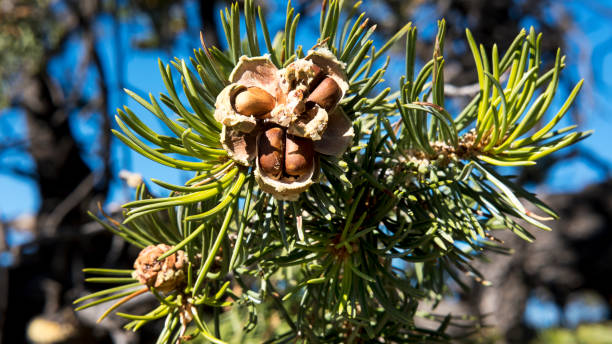
Found in the southern reaches of sub-Arctic and boreal forests, pinyon pines (Pinus edulis, P. monophylla) produce cones loaded with nutritious nuts. These pine nuts are calorie-dense, rich in fat, and excellent for long-term energy. Harvest usually involves collecting cones and extracting the kernels by roasting or drying. Pine nuts are a forager’s gold mine — portable, storable, and ideal for survival packs or trail use.
14. Strawberry-blite
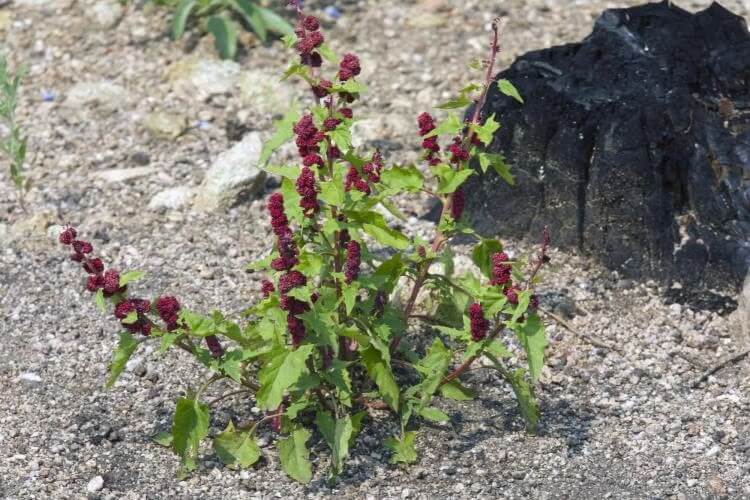
This unusual Arctic-adapted plant grows clusters of bright red, beadlike fruits that resemble miniature strawberries. Mildly sweet and juicy when ripe, the berries are often eaten straight off the plant by hikers and used in salads or jams. While fragile and short-lived once picked, they’re rich in vitamins and add a burst of color and flavor to trail meals — a pleasant surprise in northern landscapes.
15. Pineapple-weed
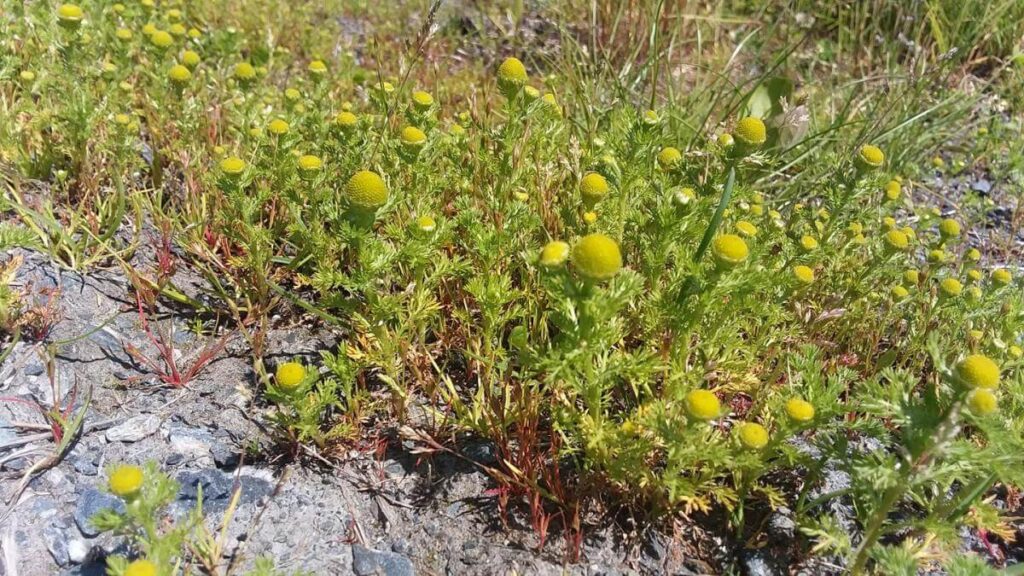
Technically a flower bud rather than a fruit, pineapple-weed is a common wild edible with a sweet, tropical aroma reminiscent of pineapple and chamomile. The yellow-green cone-shaped heads can be chewed fresh, steeped as tea, or candied for trail treats. Though not juicy, they are favored by foragers for their flavor and ability to freshen the palate on long hikes.
16. Sweet Gale
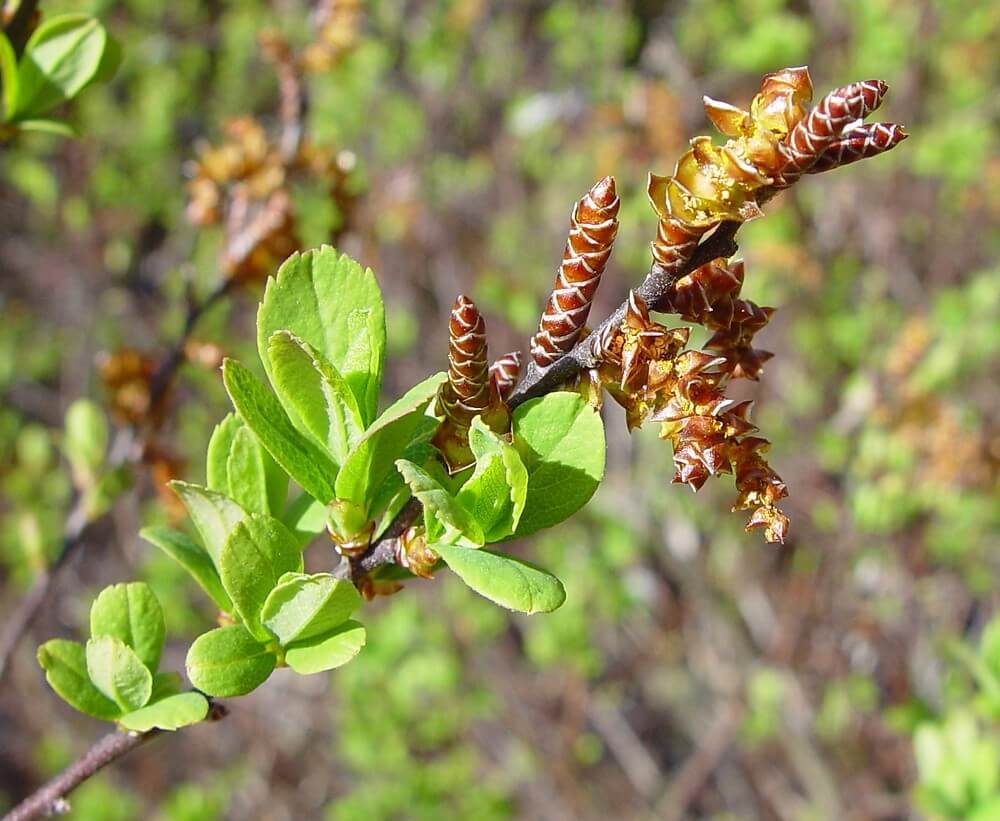
Sweet gale is a fragrant shrub of Arctic bogs that produces cone-like fruit clusters containing small, flavorful seeds. These fruits were traditionally used as a spice or flavoring for stews, teas, and even beer (before hops were common). While not a sugary berry, sweet gale’s aromatic seeds can improve foraged meals and have antimicrobial properties — making them useful both in the pot and the survival kit.
17. Cattails Fruit

Often overlooked as mere marsh scenery, cattails are one of the Arctic’s most valuable wild food sources. While their long, sausage-shaped flower heads eventually fluff into inedible seed tufts, the young green flower spikes in spring can be steamed and eaten like corn on the cob — mild, tender, and surprisingly nourishing. Earlier still, the yellow pollen from the male portion of the spike can be collected and added to flour for a protein-rich boost. Even more useful are the other edible parts: the tender inner shoots (nicknamed “Cossack asparagus”) taste crisp and cucumber-like, while the starchy rhizomes can be boiled, roasted, or dried and ground into a flour for soups, breads, or thickening stews.
NOTE: Always be 100% sure of a plant’s identity before you eat it — guessing is dangerous when it comes to wild foods. If you’re ever in doubt, ask a seasoned forager or local expert. Gathering your own fruits can be incredibly rewarding and grounding, but safety must come first so you can enjoy nature’s bounty without risk.
Also Check:
